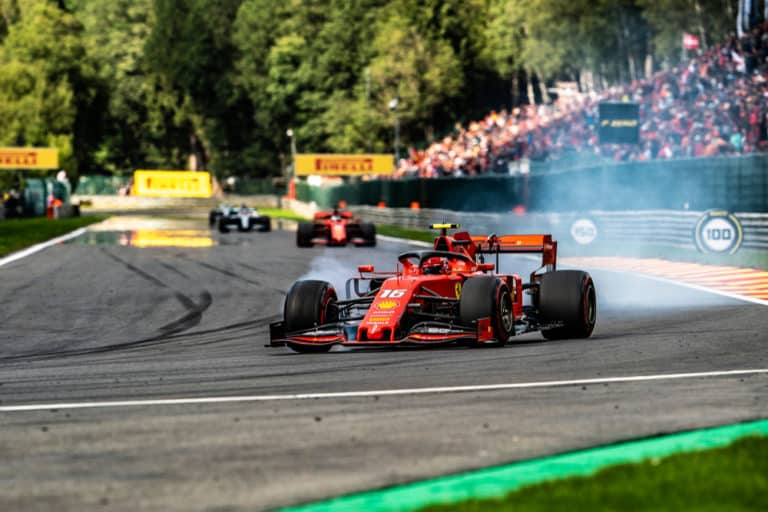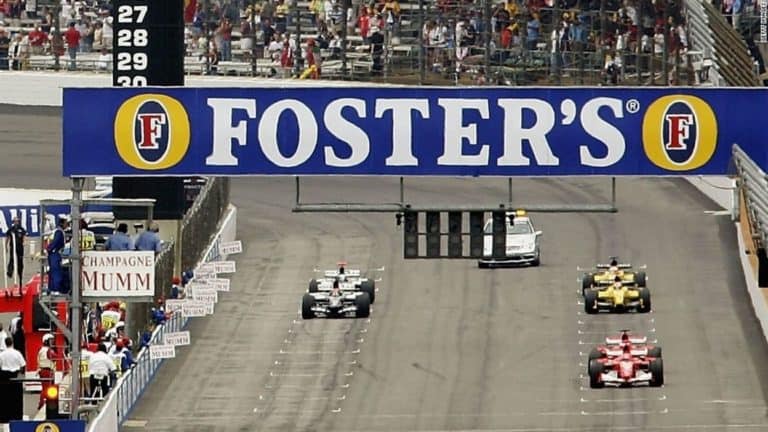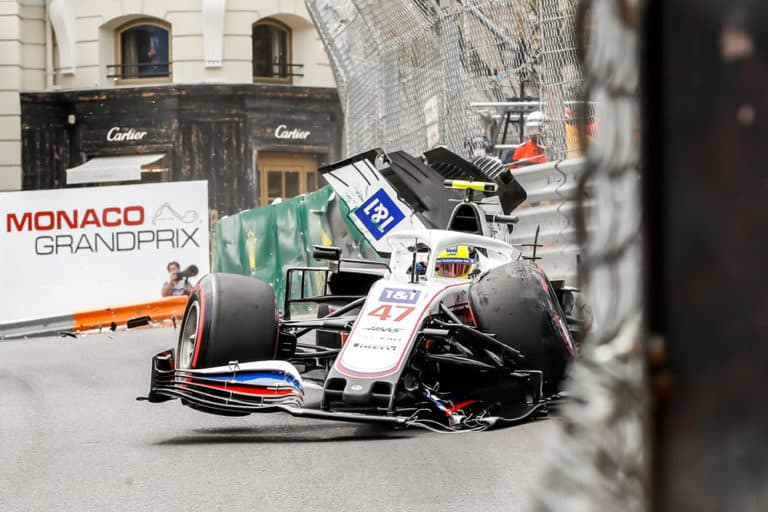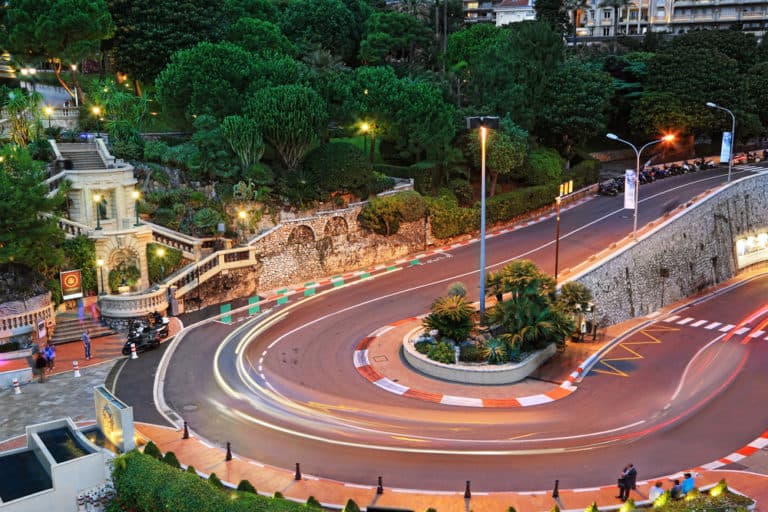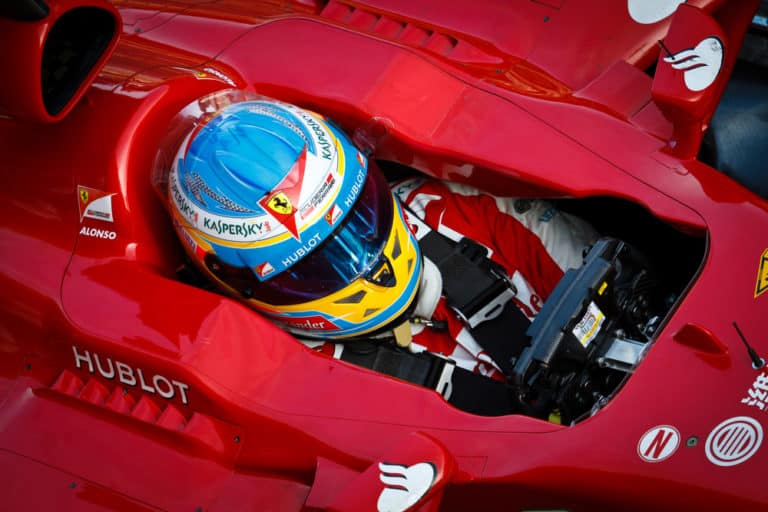Formula 1 pit stops are a crucial part of any race. Get them wrong, and your race can be a disaster. Get them right, and it can win you a race. But pit stop strategies and the number of pit stops in a race differ and are barely ever the same for drivers during a race. So, let’s look at how many pit stops are in a Formula 1 race?
Drivers make between 1-3 pit stops during an F1 race. The number of times a driver will stop will depend on the weather, track conditions, their rivals’ strategies, and potential car damage. However, drivers are required to stop at least once in a race to change their tires.
The strategy behind stops and the actual pit stops themselves are complicated processes. They depend on a variety of factors and rely on highly trained individuals to execute them with ease. So, let’s have a look at all the intricacies behind this vital part of an F1 race.
How Many Pits Stop Are in An F1 Race?
Pit stops are a vital part of a Formula 1 race. Fresh tires allow cars to go faster because they provide more grip. However, pit stops take time because drivers must drive slowly in the pit lane, and the tire changing process can take anywhere between 1.8-15 seconds, depending on how quick the pit crew is. They generally take around 2-4 seconds if everything goes to plan.
Therefore, it is crucial to get the right balance during a race weekend. Too many pit stops can slow you down because of the time wasted during a pit stop, but too few can cost you on the track because older tires mean less speed.
During a race, drivers will stop anywhere between 1-3 times, depending on strategy and/or damage sustained during the race. Sometimes it may be more than three, but this is extremely rare. In dry weather conditions, F1 drivers are required to complete at least one pit stop. During this pit stop, they must also change tire compounds as two different dry-weather (slick) tire compounds must be used during a race.
There are five slick tire compounds used during a Formula 1 season. These are on a scale of softness to hardness. Harder tires are more durable and therefore last longer during a race but provide less grip, which results in less speed. Softer tires are much less durable, so they don’t last very long during a race, but the trade-off is that they provide a lot of grip and are much quicker than hard tires.
There are also medium tires, which fall in-between the soft and hard tires on the scale. They offer a bit of both tire. They provide more durability than soft tires, but not as much as hard tires offer. However, they are quicker than hard tires but not as fast as soft tires.
During an individual race weekend, Pirelli, who manufactures all the Formula 1 tires, will choose three of the five tire types to be used during the weekend. The hardest of these tires will be designated as the hard tire for the weekend, the softest one will be the soft tire for the weekend, and the compound between the two will be the medium tire for that race weekend.
The tires used will always be next to each other on the spectrum, so that means you won’t use the hardest tire on the range and the softest tire on the spectrum on the same weekend.
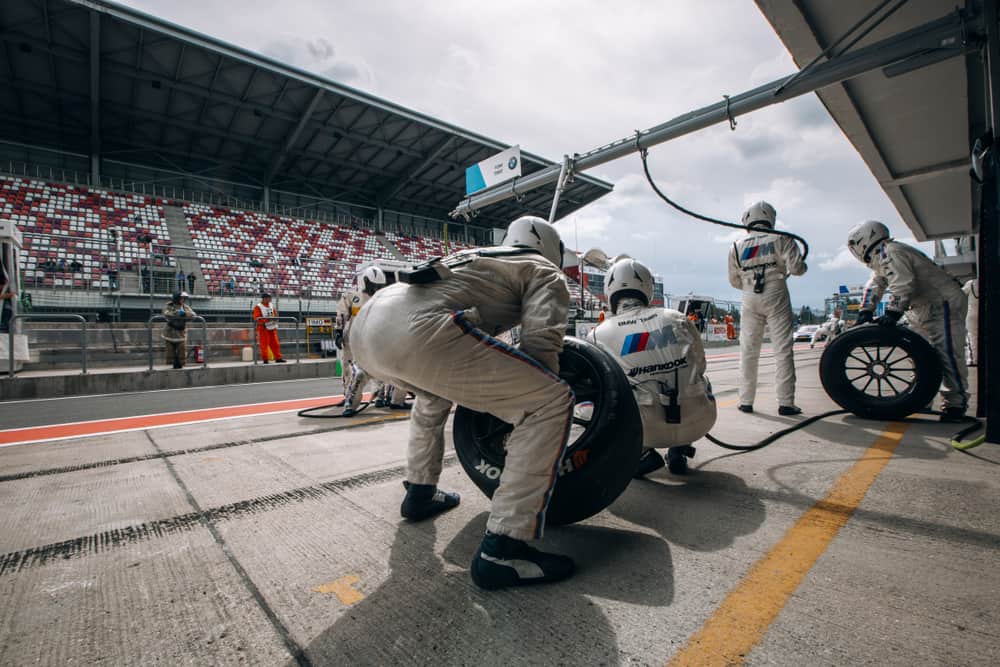
According to Pirelli, as of 2023, drivers will receive “two sets of hard tires, three sets of mediums, and eight sets of softs (soft tires) per race weekend. It is up to their team to manage their tires throughout all the practice and qualifying sessions to ensure they have a good tire selection to use during the actual race. The important thing is to ensure that drivers have at least two different compounds available to be used during the race.
How All the Tyres Are Used During a Formula 1 Race Weekend
The free practice sessions starting on a Friday are typically used to run various tires and setups to allow the teams to collect a lot of data. This data will then be combined with simulations and data from previous events to decide the optimal tire strategy during the race.
Teams must have a variety of tires that have not been used or have only been used for one or two laps for selection during the race. They need to be able to respond to changes in conditions and strategic decisions made by their rivals.
Drivers use all kinds of strategies depending on the track and their rival’s strategic decisions. For example, a driver may start the race on soft tires, then pit after around 15-20 laps, put medium tires on for the middle sector of the race, and then pit again towards the end of the race for another set of soft tires to maximize the speed at the end of the race.
Or, they could start on soft tires, and then after 15-20 laps, change to hard tires and stay on those hard tires until the end of the race.
Undercuts and Overcuts: The Potential F1 Pit Stop Strategies
You may have been watching a Formula 1 race and heard the commentators talking about overcuts and undercuts concerning pit stops. These terms can be confusing, so let’s explore them in a bit more detail.
Undercut
An undercut involves making your pit stop earlier than the car in front of you. You, therefore, go onto fresher tires, which means you have a pace advantage compared to the car you are chasing, which will be on much older tires.
The idea behind the undercut is that you use these fresher tires to overtake the driver ahead of you, who will be slower than you on their older tires, or you force the car ahead of you also to make a pit stop. Once the driver in front has been overtaken, they will often make a pit stop of their own and therefore be on fresher tires.
However, if it all goes to plan, the car pitted earlier will have built a big enough gap between themselves and their rival to ensure that they can’t be caught.
The issue with undercutting is that it can sometimes backfire if the car you are chasing pits much later than you. They can then use this advantage of fresher tires to catch you because you have much older tires.
Therefore, undercutting is all about proper execution as it requires the chasing driver to catch the driver ahead of them and then maintain their lead on slightly older tires.
The Overcut
The overcut is the opposite of the undercut. Instead of pitting before the car you are chasing, you wait for them to pit and continue out on track, gaining track position. The idea behind this is that while they are pitting and warming up their fresh tires afterward, you have the opportunity to build a big enough gap over them so that when you pit, you come out ahead of them.
This strategy is risky, though. It relies on the driver to properly manage their tires and extract maximum performance from their aging tires. It is also about timing the planned pit stop correctly as it is essential not to wait too long as this would ultimately compromise the driver’s speed out on the track because of how old their tires will be. Therefore, this strategy is used much less than the undercut.
F1 Pit Stops in Wet Weather Races
During a race where it rains, drivers are not hindered by the rules for races in dry conditions. They do not have to use at least two different tire compounds during the race.
However, drivers usually use multiple compounds during a wet weather race because of how slow the wet weather tires are compared to the dry tires. Wet weather tires have treads on them to help displace the water, but this gives drivers less grip with the track, and this, combined with the slippery nature of the track, is not a recipe for maximum speed.
Therefore, during a race that starts in the rain, teams, and drivers are looking for the first opportunity to switch to dry-weather tires. Teams will often put on intermediate tires if the track isn’t sufficiently dry for the slick dry weather tires. These offer some water displacement and a bit more speed than the full wet weather tires, which displace a lot of water but don’t provide nearly as much grip as the other tires.
It can be quite risky to switch to dry weather tires, which means that timing is everything. If the slick tires are fitted too early, the driver is more likely to slide off the track. However, if they are put on too late, the driver will be at a disadvantage compared to the other cars running slick tires.
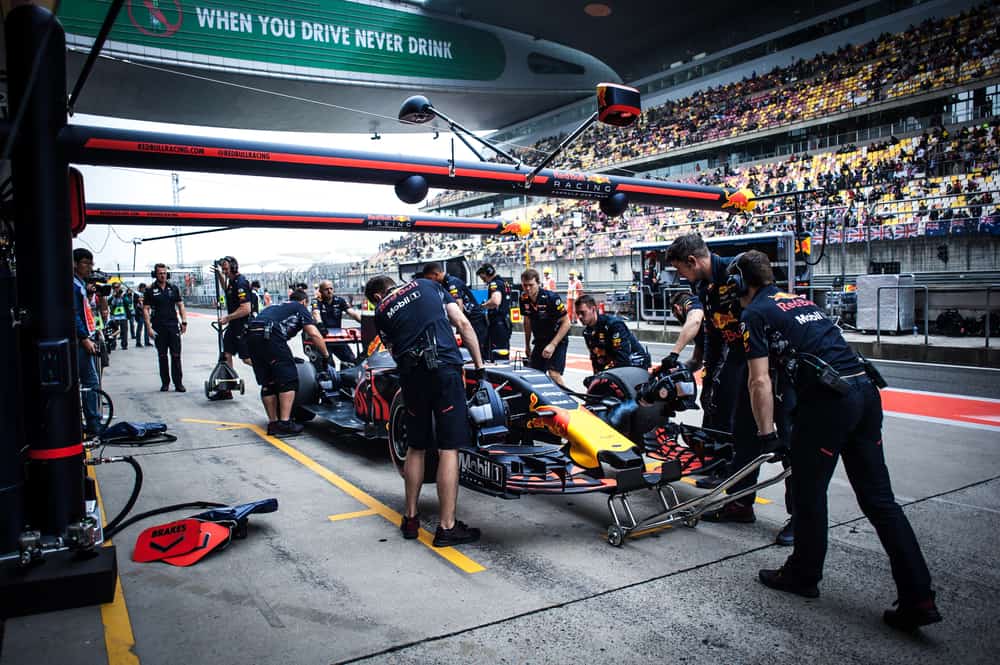
What Are Some of The Key Terms Used in Formula 1 Pit Stops?
You will often hear words used by drivers and their race engineers during a Formula 1 race that doesn’t make much sense. It is important to understand what these words/phrases mean to properly understand pit stops in Formula 1. The two main words/phrases you should know are ‘box’ and ‘double-stack.’
Box
Box is used interchangeably with ‘pit’ and is often used more regularly. It is used by drivers and their race engineers to indicate that the driver needs to come in for a pit stop. It is derived from the German word boxenstopp, which means pit stop. It will often be used twice for maximum efficiency, which is why you will often hear the race engineer telling their driver to ‘box, box.’
Double Stack
Double stacking means to pit both cars from the same team in the same lap. The leading car will go into the pits and get their tires changed, and immediately afterward, their teammate will repeat the process in that same lap.
This is often done when a safety car is deployed for a hazard on track because drivers will lose less time coming in for a pit stop. Depending on the track, the entire pit stop process can take 20-30 seconds if everything goes to plan. Therefore, pitting under a safety car when the cars out on track cannot overtake and are bunched together is beneficial, as much less time is lost.
However, double stacking can be dangerous as it requires more focus and skill from the pit crew than a routine pit stop. They have to have both sets of tires ready, make sure they don’t get mixed up, and ensure that the old tires from the first car don’t impede the second car or the pit crew.
Sometimes double stacking can go horribly wrong as it did for Mercedes at the Sakhir Grand Prix in Bahrain in 2020. George Russell, filling in for Lewis Hamilton and Valtteri Bottas, had the wrong tires put onto their car. Russell received Bottas’s tires, and Bottas was given Russell’s tires. As individual drivers are allocated a specific number of tires for a race weekend, this was illegal, and they had to rechange the tires, which lost both drivers a lot of time.
How Formula 1 Pit Stops Work
After the driver has been told to ‘box,’ their fate is no longer in their hands but rather in the hands of their pit crew. They rely on their pit crew to perform a rapid tire change to ensure they spend the least amount of time possible stationary in the pit box.
Once drivers enter the pitlane, they must slow down to 80kph (50 mph) in the race. This is to ensure the safety of the pit crews and everyone working in and around the pit lane. Drivers have a special button on their steering wheels that they press, which limits their speed automatically in the pit lane. However, if drivers fail to respect the speed limit, they will receive a time penalty.
Pit stops in Formula 1 are a complicated process and involve over 20 people. Teams practice them for hours during the offseason and in between track sessions on a race weekend. They must be as quick as possible as in Formula 1; mere split seconds can be the difference between coming out ahead or behind a chasing car.
Each of the 23 people involved in a pit stop has a specific role, and all are as crucial as the rest. A front jackman and a rear jackman are responsible for lifting the car off the ground to change the tires. The jacks they use cost over $300.000 as they are highly specialized pieces of equipment that need to lift the car with ease.
Some four-wheel gunners are responsible for unfastening the old wheel and fastening the new wheel. Someone removes the old tire to help the wheel gunners, and another person helps put the new wheel on. Therefore, for each wheel attachment on the car, there are three people responsible for the wheels.
Two mechanics are also responsible for holding the car steady while the pit stop is taking place, and another two adjust the front nose cone if necessary.
Once the car has been stopped, the mechanics will quickly change the tires. Ever since mid-race refueling was banned in 2010, the average pit stop time if no front wing change is required is around two to three seconds. However, if the front wing has been damaged and needs to be changed, pit stops will take well over 10 seconds as it takes much longer to remove and replace the front wing than it does with tires.
Red Bull performed the fastest pit stop in Formula 1 history at the 2019 Brazilian Grand Prix, and they changed Max Verstappen’s tires in only 1.82 seconds.
This does not include the time it takes for drivers to enter and exit the pit box. The entire process takes between 20-30 seconds, depending on the length of the pitlane at the specific track.
Conclusion
Pit stops in Formula 1 are a key part of any race. As the entire process takes between 20-30 seconds and can happen anywhere between 1-3 (maybe even more), the risk-reward ratio is significant. Therefore, they must be performed with maximum efficiency to ensure as little time is lost.
But, if you get them right, they can turn the race on its head and allow you to gain an advantage over your rivals, and for those at the front, this can be the difference between winning and coming second.
References
- https://www.formula1.com/en/latest/article.aero-tweaks-new-tyres-and-the-cost-cap-the-2021-f1-rules-and-regulation.r1cq36aI6bvzMeZtiFru3.html
- https://www.sportskeeda.com/f1/what-formula-1-s-fastest-ever-pit-stop
- https://www.formula1.com/en/latest/article.gone-in-1-88s-putting-together-the-perfect-f1-pit-stop.3lLKnEoPKdJgACsUn9IltC.html
- https://flowracers.com/blog/undercut-overcut-double-stack-f1-pit-stops/
- https://www.carthrottle.com/post/all-you-need-to-know-about-a-formula-1-pit-stop/

